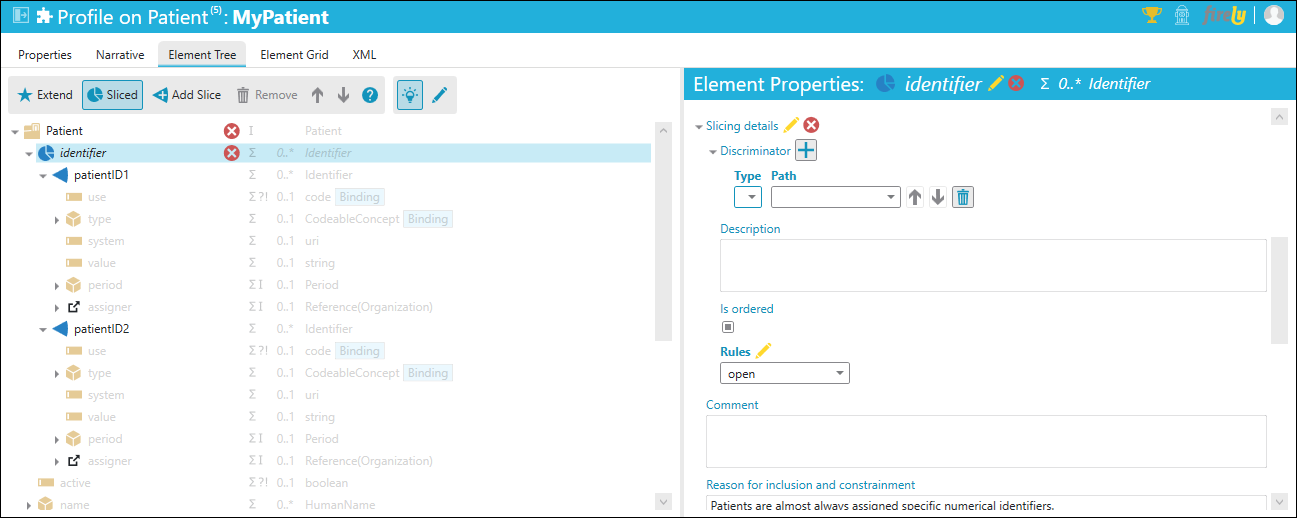Define Slices
To further customize a base Resource you can slice available elements to capture a variety of the same element. This is particularly helpful when you want to capture multiple versions of an element of your base Resource. For instance multiple patient identifiers or multiple name parts. This allows you to define specifics such as CodeableConcepts for each part of the sliced object. This process entails slicing a structure element into sub items. The sub items that are created are then referred to as slices.
Slicing in Forge
Select the element that you want to slice and click on Slice.

The element is now ‘Sliced’ and it is possible to add slices by clicking
Add Slice. You can create as many slices as necessary by selecting
the sliced element and clicking Add Slice again. The added slices
can be defined and constrained as any other element.
Discriminator
After adding slices, Forge shows a validation message containing the message that there is no discriminator defined for the sliced elements.

The discriminator is used to distinguish the sliced elements from one another. The discriminators in their sum should allow applications to easily determine which slice belong to each section. The discriminator information can be provided in the Element Properties of the sliced element under Slicing Details.

More information concerning slicing and discriminators can be found here: http://hl7.org/fhir/profiling.html.
Type Slicing
Type slicing applies to so-called polymorphic “choice type” elements that support multiple data types. A choice type element has a name that ends with “[x]”, e.g. Observation.value[x]. Using type slicing, you can define constraints for specific element types. Per definition, the slicing discriminator of a type slice is equal to “@type”. Each slice constraint you define must have a unique type.
